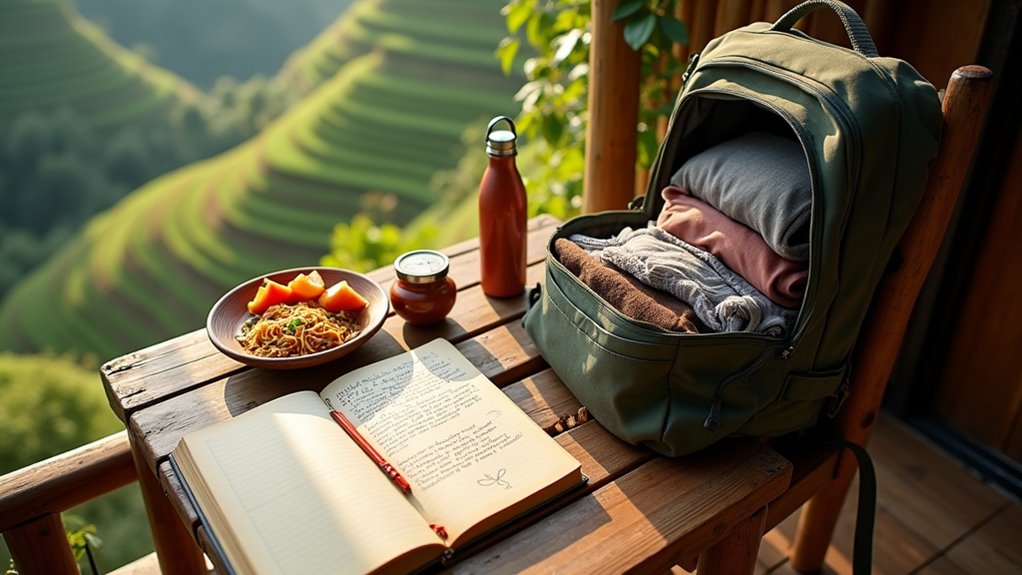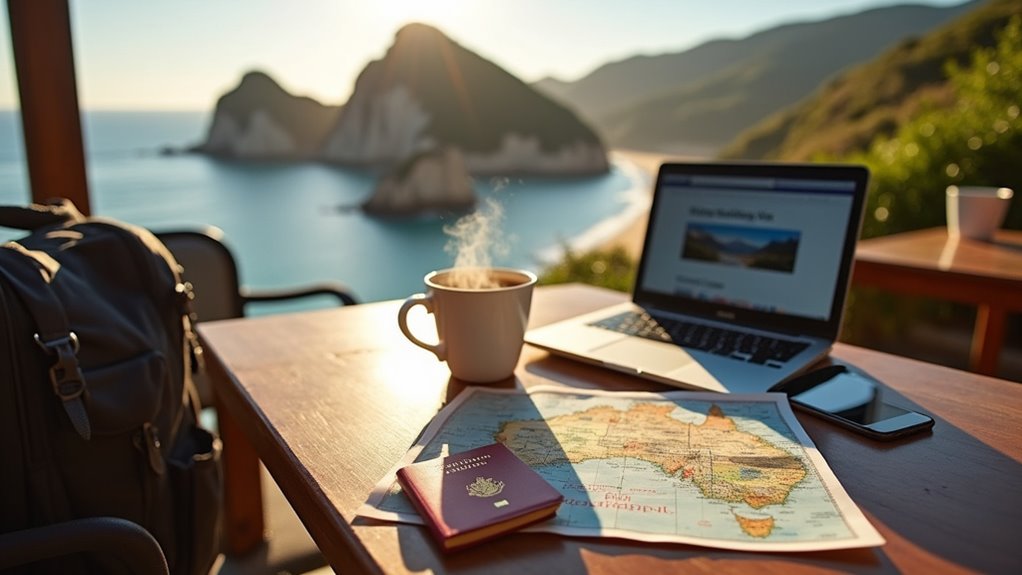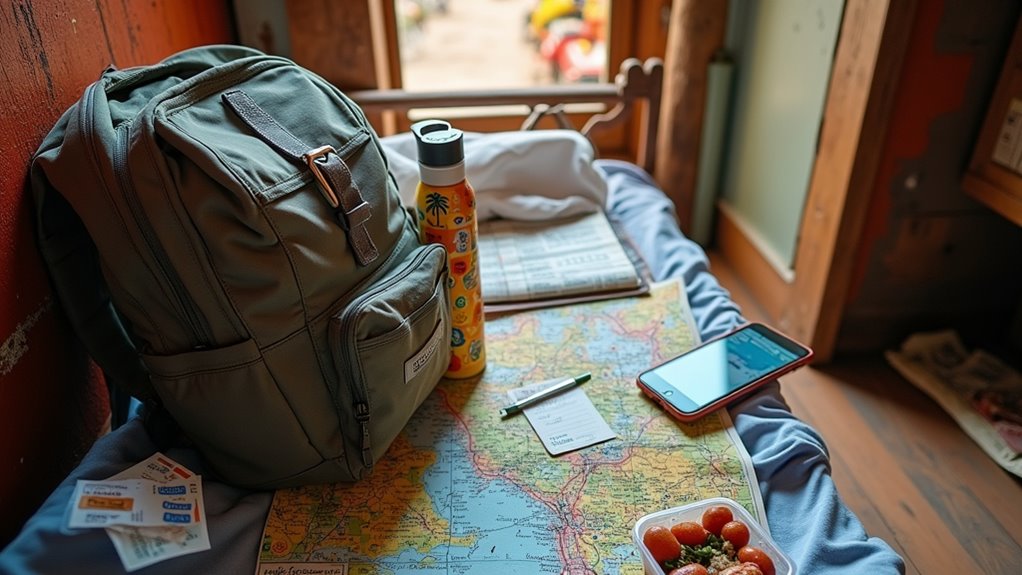When choosing a campsite for your backpacking trip, check local regulations and obtain permits if needed, then use maps or online resources to locate sites at least 200 feet from water sources or trails. Prioritize flat, durable ground near natural wind barriers while avoiding flood zones, dead trees, or wildlife habitats. Opt for established sites with existing fire rings, always follow Leave No Trace principles, and pack for changing weather. To optimize your experience, the next steps include evaluating gear and campsite impact.
Before you set out on a backpacking trip, choosing the right campsite is essential for both your safety and the preservation of the environment. You’ll want to start by researching local regulations and guidelines, as different areas often have specific rules about camping locations, permits, and fire use. Always consult guidebooks, detailed maps, or reliable online resources to identify potential campsites along your planned route.
Carefully research local rules and campsite options before your trip to ensure safety and protect the environment on your backpacking adventure.
It’s wise to contact local authorities, such as ranger offices, especially in heavily trafficked regions, to clarify permit requirements and any seasonal restrictions.
Pay close attention to environmental conditions before heading out. Check weather forecasts and understand how seasonal changes might affect trail or campsite accessibility. Gather all necessary equipment in advance, making certain your gear is in good condition, and pack with consideration for expected weather and terrain.
When choosing a campsite, prioritize sites near a water source for cooking and hydration, but make sure you’re at least 200 feet away from both trails and water to minimize your impact and avoid disturbing wildlife. Choosing a five-star campsite can significantly enhance your backcountry experience by providing warmth, dryness, privacy, and minimal pests.
Shelter and wind protection are critical, so look for areas shielded by natural features like trees or rock outcroppings. Select a spot that doesn’t obstruct scenic views for others, and avoid camping near obvious wildlife habitats. Look for flat areas with durable surfaces like rock or compacted dirt to reduce your impact and ensure a comfortable rest.
Always use established campsites if available, as this limits further environmental disturbance. Practice Leave No Trace principles: minimize your footprint by not creating new trails, dispose of all waste properly, and avoid damaging vegetation or local ecosystems.
Be aware of potential hazards such as flood zones, steep slopes, or dead trees that could fall in high winds. If you plan to have a campfire, choose a site with a fire ring already in place to minimize environmental impact and wildfire risk. Consider the site’s accessibility in case of emergencies and always carry a basic first aid kit.
Plan to reach your campsite at least two hours before sunset to allow for setup and safety checks. If your trip is longer or your group is large, choose sites near resupply points or with enough space to accommodate everyone comfortably.
Use biodegradable products, pack out all trash, and respect wildlife by maintaining a safe distance. By following these guidelines, you’ll guarantee a safer, more enjoyable, and environmentally responsible backpacking experience.









